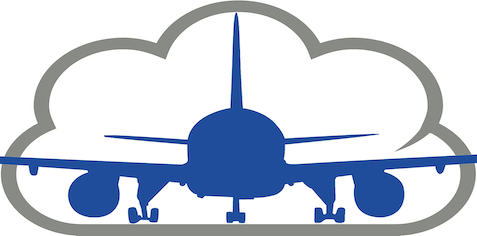Aviation | Services | Introduction

Introduction
Both domestic and international civil aviation users rely on the provision of meteorological and other dedicated services including air traffic services to ensure that they can operate safely, efficiently, securely and economically and with minimal impact on the environment, both on the ground at airports and in the sky in airspace.
Meteorological conditions at airports and in airspace can be both a help and a hindrance to aviation operations. For example, strong westerly winds (air that is moving from west to east) at cruise altitudes, typically between 29,000 and 41,000 feet, over the North Atlantic can help shorten flight times of aircraft operating from North America to Europe, sometimes by tens of minutes or even up to an hour, thereby helping to reduce fuel burn and environmental impact and ultimately meaning that passengers can arrive on-time or even ahead of schedule at their destination. However, the very same strong westerly winds aloft can have the opposite effect on flights operating from Europe to North America because longer routes have to be planned to avoid strong headwinds and perhaps even severe turbulence, resulting in longer flight times, delayed arrivals, increased fuel burn, etc..
Partnerships and Resources
WMO and its partners, including the International Civil Aviation Organization (ICAO), play an essential role in the development of internationally-applicable technical regulations and guidance material in meteorology, including standards, recommended practices and procedures, that enables aviation to operate safely, efficiently, etc. on a worldwide basis, 24 hours a day.
Through the Services for Aviation activity area, and working with other activity areas internal to the Organization and externally with partner organizations, WMO is committed to supporting its Members and their aeronautical meteorological services providers in the development and implementation of the meteorological techniques and practices for the provision of services to aviation, based on identified aeronautical user requirements established by ICAO.
The Services for Aviation activity area therefore helps to coordinate basic meteorological networks and facilities required for effective provision of meteorological service to international air navigation, set standards for meteorological and climatological information, defines aeronautical meteorological personnel qualification and competency standards, and advances science and technology in support of the ever growing demand of aviation users for fully interoperable, fit-for-purpose, high-quality information services.
The Services for Aviation activity area and WMO Regional Associations play a major role in providing targeted assistance to Members, particularly but not exclusively in developing and least developed countries, to build their individual and collective capacity to meet the international requirements for quality, competency and performance of the aeronautical meteorological service. The governance and partnership element of this undertaking develops guidance material, models of good/best practice, documentation and training for all Members, thereby enabling them to provide services to the required standards, country-to-country and region-to-region. The Services for Aviation activity area also promotes the establishment of fair, equitable and transparent cost-recovery mechanisms needed for a sustainable and high quality aeronautical meteorological service.
Responding to change
In recent years, the work of WMO in this activity area has been necessarily expanded to coordinate and facilitate the development of the meteorological components of ICAO's Global Air Navigation Plan (GANP) and its aviation system block upgrades (ASBU) methodology. The GANP cover the broad spectrum of institutional, regulatory, technological and operational aspects of the envisaged performance improvements in support of a“One Sky” global air traffic management concept, with a time horizon extending into the 2030s and beyond. Among these aspects are the integration of aeronautical meteorological information in the system-wide information management (SWIM) environment of global air traffic management. This will necessarily result in the enhancement of international facilities and services established by ICAO in coordination with WMO, such as the world area forecast system (WAFS) and the international airways volcano watch (IAVW). In addition, it will necessitate the development of a new generation of meteorological information services to support safe, effective and efficient air traffic management, trajectory-based operations well into the 21st century and to mitigate the impacts of, for example, climate change and variability as well as the effects of space weather on aviation operations.
CLICK HERE to find out more about our implementation areas
CLICK HERE to return to our homepage
